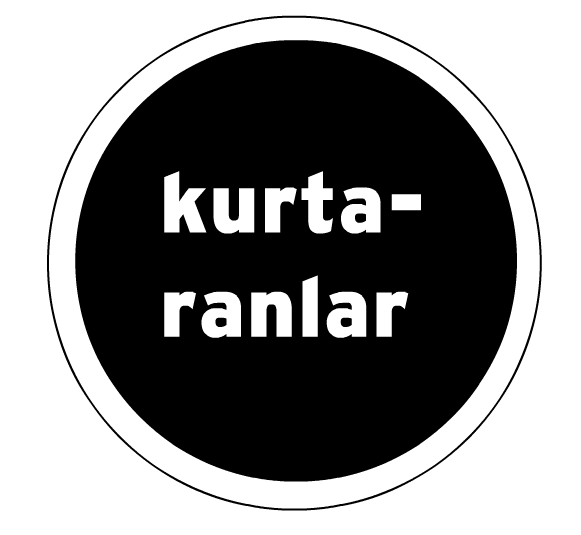Diyarbekir Vilayeti, Mamuretül Aziz ile birlikte, Ermeni Soykırımı sırasında emirlere karşı gelenlere en fazla rastlanılan ya da hikâyelerinin günümüze en çok ulaşabildiği bölgeler arasında geliyor. Bölgede yaşayan toplulukların “kendi kaderlerinde de 1915’le birlikte geri dönülmez bir kırılma yaşandığı” hissiyatı, döneme dair belleğin bölgede bu denli canlı kalmasında belki de en önemli etkenlerden biri.
Bölgede bilinen adıyla “Fermana Fılla” -Kürtçe ‘gayrimüslimlerin fermanı’- sadece Ermenileri değil, Süryaniler de dahil olmak üzere tüm Hıristiyanları hedef alır.
Yağtığımız araştırmada şimdiye kadar tüm vilayetlerde 185, Diyarbekir Vilayeti özelinde ise 35 vicdanlı kişinin hikayesine ulaşabildik. Burada Diyarbekir Vilayeti’nden iki kişinin hikayesini aktaracağım.

“Kim Hıristiyanları vurursa beni karşısında bulur”
Bölgenin en önemli aşiret konfederasyonlarından Heverkiler (ya da diğer isimleriyle Haverkan), iç çekişmelerine karşın, Midyat, Nusaybin ve İdil Süryanileri ile Ermenilerini koruyan en önemli güçlerden biriydi.1 Heverkilerin bölgede kendilerinden başka otorite tanımayan yapıları bu durumda belirleyici olsa da, aşiret mensuplarının arasında Süryani ve Ezidilerin bulunması da önemli bir etkendi.
Birinci Dünya Savaşı patlak verdiğinde Heverki liderlerinden Ali Batte, bölgedeki idari makamlara kök söktüren isimlerin başında geliyordu. Seferberlik emrine uymayı reddettiği gibi devlete vergi verilmesini de yasaklamıştı. Eylül 1914’te bu faaliyetleri sebebiyle Ali Batte ve diğer Heverki liderleri yakalanır, hapse atılır.
Tehcir başladığında Ali Batte ve sağ kolu Süryani lider Şemun, Harput Hapishanesi’ndedir. Kimi kaynaklara göre, annesi Fasıle’nin inisyatifiyle,2 kimilerine göre ise, bizzat Batte’nin gönderdiği talimatlarla Heverkiler bölgedeki Süryanileri ve Ermenileri tehcir ve katliamlardan korumaya çalışırlar.
2 Temmuz 1915’te Hacı Başar Bey, Midyat’ın Kürt ve Arap aşiret reislerini bir araya getirir ve Hıristiyanlara yapacakları saldırıya destek ister. Ali Batte’nin kendisiyle aynı ismi taşıyan torunu Ali Batte’ye göre, o tarihte dedesi Şemun’la birlikte hapisten kaçmıştır. Şehirde bir toplantının yapılacağı haberi Ali Batte’ye ulaşır. Torun Batte o günleri bize şöyle aktardı: “Alike Batte’den katliama katılmasını istedikleri zaman “Kim Hıristiyanları vurursa beni karşısında bulur” diye gürledi. Biz, Çelebiler ve Mala İsmail, yani tüm Heverkiler sahip çıktık. Sonra birbirimizle ağalık için kavgamız oldu ama Ferman’da birlikte hareket ettik”.3
Başka kaynaklar, Ali Batte’nin o tarihte hapisten çıkamadığını, annesi ve aşiretin merkezi sayılan Mzizexlilerin (bugünkü adıyla Doğançaylıların) Hıristiyanları korumada aktif rol aldığını belirtir. Heverkiler kurtarabildikleri Süryanileri bir direnişin örgütlendiği Ayn Wardo’ya ulaştırırlar.4
Savaş sonrasında Ali Batte bölgede devlet otoritesini tanımadığını daha büyük çaplı bir eylemle duyuracaktır. 11 Mayıs 1919’da, 100 kadar adamıyla birlikte Nusaybin’i basar. Aylarca devam eden takip sonucunda, 18 Ağustos 1919’da, Ali Batte’nin yeri tespit edilir, güvenlik güçleri ve devlet yanlısı aşiretlerle girdiği çatışmada öldürülür.
“Hıristiyanlara haksızlık yapmayın, günahtır”
Mardin bölgesinde 1915’e dair pek çok kaynakta, Savur’da çoğu çocuk iki yüze yakın kişiyi kurtaran Vahabi Efendi’den bahsedilir.5 Sözü edilen kişi eski Diyarbakır ve Dersaadet Posta ve Telgraf Müdürü Vehbi Efendi’dir.
1915’te Savur’da az sayıda Ermeni yaşamaktadır, 1000 kişiye yakın bir nüfus şehir merkezinde toplanmıştır.6 Çevredeki diğer yerleşim merkezlerinde olduğu gibi Süryani nüfus daha yoğundur. Savur merkeze yakın Qelet (Dereiçi), bugün de varlığını sürdüren, önemli bir Süryani yerleşim merkezidir.
Haziran 1915’te Savur’da tehcir ve katliamlar başlar. Qelet, Vehbi Efendi’nin konağına çok yakındır, kaymakamın köylüleri kafileye kattığını duyunca soluğu köyde alır. 87 erkek ve 8 kadını kafileden çekip kurtarır, evine götürür.7 Ailenin “şato gibi” diye nitelediği geniş konakta tehcirden kurtarılan 95 Süryani “ortalık sakinleşene kadar” kalırlar.
Konağın bulunduğu Ras el Harf mevkii, Sason ve Siirt kafilelerinin tehcir güzergahındadır. Siirt’ten sürülen Dominiken rahibelerin dahil olduğu kafileden yaralı haldeki 20’ye yakın kadını ,Vehbi Efendi kurtarır, evine götürür. Dominiken Rahip Jacques Rhétoré’nin anlatımıyla “Onlara çok onurlu bir şekilde davranır ve asla İslamiyet’e geçmelerini önermez”.8
Vehbi Efendi’nin konağı tehcirden ya da amele taburlarından kaçan Sasonlu Ermenilerin de sığınak yeri olur. İsmi ‘kurtarıcı’ olarak Sasonlu Ermeniler arasında bilinir hale gelir.
Başka pek çok vicdanlı kişinin hayat hikayesinde de gördüğümüz, 1915’teki tavrın Cumhuriyet döneminde görülen muamelede belirleyici olması kuralı Vehbi Efendi’nin ailesi için de geçerli olur. Aile üyeleri 1925’te Şeyh Sait İsyanı’ndan sonra, Şeyh Sait’e destek vermemiş oldukları halde, Manisa’ya sürülür. 8 sene sürgünde kalırlar. Bu sırada ailenin mülkleri yok pahasına satılır.
Vehbi Efendi’den bugüne kalan, çocuklarına Hıristiyanlara haksızlık yapmamalarını öğütleyen, aksini günah olarak gören, Kuran okumayı sevdiği kadar İncil de okuduğu bilinen ve hayvanlara en ufak bir kötü muameleyi kabul etmeyen bir kişinin hatırası olur.
1- Heverkilerle ilgili detaylı bir inceleme için: Nezire Cibo, Haverkan Sultanları 1, Komal Basım Yayın, İstanbul, 2010. Kimi Heverki liderleri Çelebi, Sarohan ve oğlu Serhan Ağalar 1907-1910 arasında da Süryani köylerine saldırılarda bulunmuş, arazi ve mallarına el koymuştu. Bu sebeple aşiretin bu kolunun reislerini “vicdanlı”lar arasında değerlendirmek güçtür. Tanzimat’tan sonra Tur Abdin’de Aşiretler ve Hıristiyanlar, Suavi Aydın, Mardin Tebliğleri, s. 148-153, Hrant Dink Vakfı yayınları, Ekim 2013, İstanbul
2- İskender Debbaso ile görüşme, Kasım 2013, Midyat.
3- Ali Batte’nin torunu Ali Batte ile görüşme, Kasım 2013, Nusaybin.
4- Massacres, resistance, protectors, David Gaunt, Gorgias Press, 2006, New Jersey, s. 186, 192-195.
5- Racho Donef, Vehbi Efendi’nin kurtardığı bir kişinin tanıklığına dayanarak görevini yanlış bir şekilde “kaymakam” olarak verir. Righteous Muslims during the Genocide of 1915, Racho Donef, 2010, Sydney.
6- Le génocide des Arméniens, Raymond Kévorkian, Editions Odile Jacob, Paris 2006, s.460-461
7- Vehbi Efendi’nin torunu N. ile görüşme, Ağustos 2014, Ankara.
8- Siirt kafilesiyle tehcir edilen ve Vehbi Efendi’nin kurtardığı rahibe Issa Warina Mardin’e ulaştıktan sonra yaşadıklarını Dominiken din adamları Marie Dominique Berré, Jacques Rhétoré ve Hyacinthe Simon’a anlatır. Les Chrétiens aux bêtes, Jacques Rhétoré, s. 183, Cerf, 2005, Paris. Mardine, la ville héroïque, Hyacinthe Simon, s. 170-171, Namaan, 1991, Jounieh. Massacres de Mardin, Marie-Dominique Berré,Haigazian Armenological Review, vol. 17, s. 81-106, 1997, Beyrouth.




